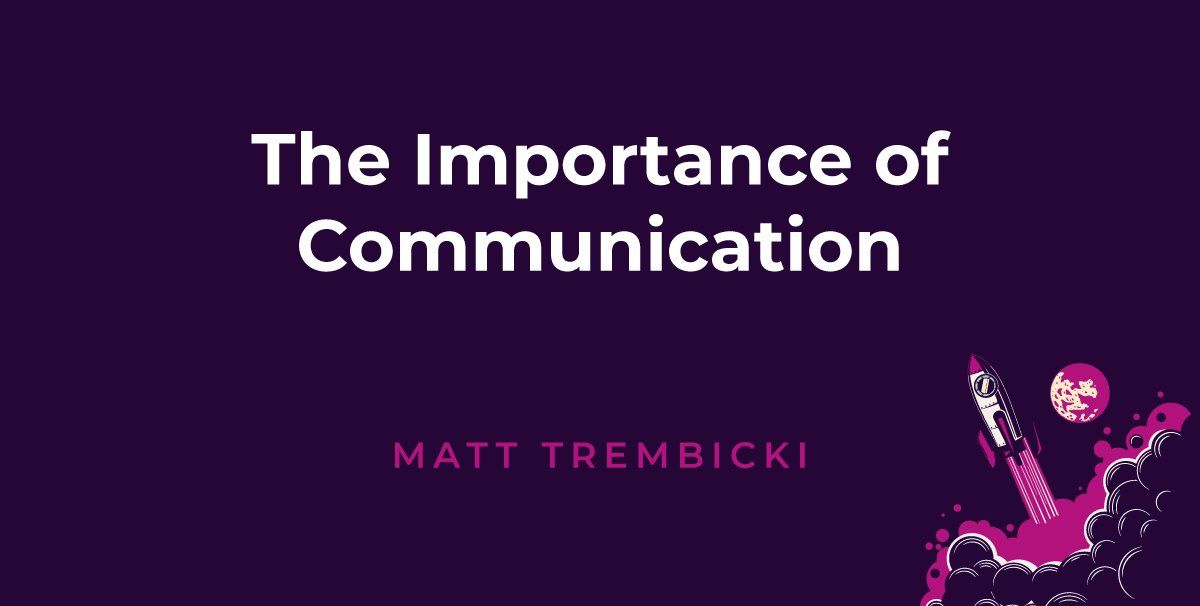The Importance of Communication
As I’m learning and growing in the consulting world, I am increasingly seeing how vital communication within an organization is in ensuring success and overall company health and well-being.
I have benefitted from seeing both sides of communication—the good and the bad. Proper communication can elevate an organization’s operations, with overall happy clients and employees meeting their goals.
I have also witnessed how a lack of communication—or in worst cases, no communication at all—has thrown a wrench in the entire system, with ramifications ranging from mild disruption and discontent among the ranks to chaos and failed endeavors. Again, it is a broad spectrum, but the one common denominator is communication.
Balancing the Scales of Communication
There is a fine line between over-communicating and under-communicating. As in all facets of life, finding balance can be challenging. Communication, in particular, is vital to master. For any team to function at the most optimum level, the channels of communication must remain open and efficient but not stifled by micromanagement and excessive “leadership.”
It may sound like an impossible scenario. But, there is a balance. So, one has to wonder: When is intercompany communication not enough, and how do you know if you’re overcommunicating? Where is that sweet spot of just right?
Under-Communication Creates Chaos
There is a fine line between over-communicating and under-communicating. As in all facets of life, finding balance can be challenging. Communication, in particular, is vital to master. For any team to function at the most optimum level, the channels of communication must remain open and efficient but not stifled by micromanagement and excessive “leadership.”
It may sound like an impossible scenario. But, there is a balance. So, one has to wonder: When is intercompany communication not enough, and how do you know if you’re overcommunicating? Where is that sweet spot of just right?
Under-Communication Creates Chaos
Under-communication can create chaos simply because no one is instructed on what is expected or supposed to happen next. No one is sharing clear leadership, guidance, or next steps.
Mark Sanborn said it best when he warned, “In teamwork, silence isn’t golden, it’s deadly.” George Bernard Shaw mirrored these sentiments saying that “The single biggest problem in communication is the illusion that it has taken place.”
Let’s face it: employees and team members are not mind readers. One can’t assume that people automatically understand you or what you are trying to convey, especially if you are not explaining your thoughts clearly
Along this line, the following quote from Jeffrey Morales is important, as just as vital as voicing your clear expectations, is doing so with respect, including sharing the rationale behind what you are asking them to do.
Morales encourages to “Communicate in a respectful manner – don’t just tell your team members what you want, but explain to them why.” You’d be amazed at how having a sense of purpose will inspire teams to make something great happen.
The Hand That Guides
The importance of respect and communication in the workplace leads to leadership and guidance, with the roles of CEO and upper management bearing the weight of responsibility that is steering the corporate ship. This requires stellar communication on many levels, especially setting strategy and direction by actively guiding people.
Gilbert Amelio, President and CEO of National Semiconductor Corp, summed up what a leader should shoot for in how to guide their group: “Developing excellent communication skills is absolutely essential to effective leadership. The leader must be able to share knowledge and ideas to transmit a sense of urgency and enthusiasm to others. If a leader can’t get a message across clearly and motivate others to act on it, then having a message doesn’t even matter.”
Everyone is on a learning curve, and the key is showing up every day to pay attention, listen, learn, and keep growing.
I am still learning. There is no perfect communication. There won’t be a time when we all “arrive” as professionals at this ideal place where we always operate in that sweet spot of succinct and just right communication. But, every day, we can practice the fine art of toeing the line between over and under-communication and evolve into ever better communicators.




